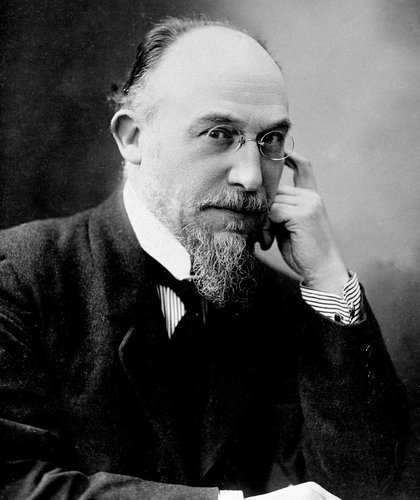
Erik Satie
Erik Satie (1866-1925) was a French composer, pianist, bohemian, eccentric and oddball. He was also a talented writer and illustrator. Even though he began studying at the Paris Conservatoire at a young age, he lacked proper motivation and quit his studies after 2 and a half years. He was readmitted in 1885, only to be expelled soon after because his teachers thought he lacked talent. He started composing in 1884. After a short spell volunteering for military service, he moved away from home in 1887 to lodgings in the bohemian Montmartre quarter. Around that time, he started working as a pianist at Le Chat Noir Café-cabaret, and became friends with such members of the Parisian artistic world as Mallarmé, Verlaine and Debussy. Along with the latter, he became a member of the Rosicrucian ‘Ordre de la Rose-Croix Catholique, du Temple et du Graal’. Satie was the official composer and chapel master of the order, for which he composed his works ‘Salut Drapeau!’, ‘Le Fils des étoiles’ and ‘Sonneries de la Rose+Croix’. Satie got to know the young Maurice Ravel in 1893, and the young man did much to popularise the works of his older colleague. In 1905, as a forty-year-old cabaret pianist, he enrolled into Vincent d’Indy’s Schola Cantorum to study formal counterpoint. Success finally caught up with him in 1912, when people started to discover his short, humorously-titled piano pieces which contained his numerous remarks scribbled on the score. He made contact with Cocteau, Diaghilev and Picasso, some of the most exciting artists in the Paris of the day, and he founded the group ‘Nouveaux Jeunes’. In 1919 he became friends with the founder of Dadaism, Tristan Tzara, and he could finally be called a defining figure of Parisian artistic life.